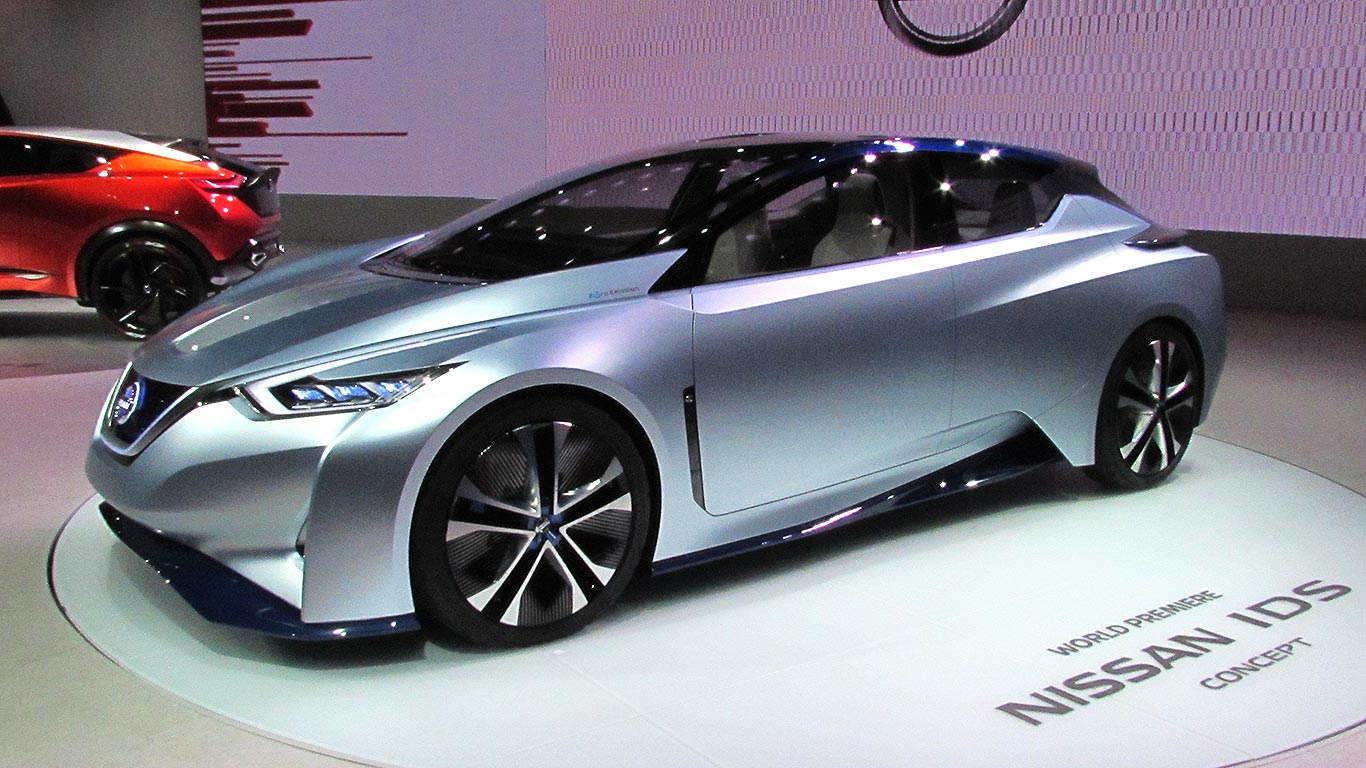 Nissan has revealed the IDS Concept at the Tokyo Motor Show 2015 to demonstrate its take on the autonomous car of the future – and provide a clear tease as to how the next-generation LEAF EV will look.
Nissan has revealed the IDS Concept at the Tokyo Motor Show 2015 to demonstrate its take on the autonomous car of the future – and provide a clear tease as to how the next-generation LEAF EV will look.
The IDS Concept is a zero-emissions EV that blends autonomous self-driving car functionality with artificial intelligence. This, says Nissan, helps give autonomous drive tech real-world relevance – something the firm is planning to launch on several vehicles within the next five years.
Nissan says the IDS Concept offers two functions, Manual Drive and Piloted Drive. Intriguingly, it will learn the driver’s own style and apply this to piloted driving: the cars will perform slightly differently, based on who’s been driving them previously.
Potentially some self-driving Nissan IDS Concepts will autonomously corner, accelerate and brake more quickly and sportily than others!
Nissan is keen to emphasise the fun-to-drive part and says the driver will still remain engaged even when the car is driving itself. This is an important factor in occupants having confidence in autonomous cars.
“Two zeroes”
Nissan president and CEO Carlos Ghosn said: “Nissan’s forthcoming technologies will revolutionize the relationship between car and driver, and future mobility.”
“Nissan Intelligent Driving improves a driver’s ability to see, think and react. It compensates for human error, which causes more than 90 percent of all car accidents.”
It’s part of Nissan’s aspirations for zero fatalities and zero emissions, “in our mission to help create a sustainable car-based society”. The firm dubs this the ‘two zeroes”.
Two interiors
The IDS Concept has two interior layouts, one for each driving mode. In Manual Drive, all seats face forward, the steering wheel, dials and head-up display are all present, and interior lighting switches to blue: this is said to improve the ability to concentrate.
However, in Piloted Drive, the steering wheel folds away and the dashboard slides back below the windscreen, replaced by a large flatscreen instead. Seats rotate inwards, the interior is illuminated by soft light and all driving-related functions are handled either by AI or driver voice and gesture control.
Nissan reckons it’s like relaxing in a living room.
Drivers can switch between modes using the PD Commander between the front seats. When in Piloted Drive, this is the only control the driver can operate.
Multi-function exterior
The exterior panels are also functional. For example, there’s an illuminated silver bodyline LED strip that switches to red when pedestrians and cyclists are nearby – this is to assure them the car knows they’re there. The dashboard also has an electronic display that can flash text messages to pedestrians.
The Nissan IDS Concept wears lightweight carbon fibre bodywork that’s just 1,380mm high to lower the aerodynamic drag.
Wheels are large in diameter but relatively narrow in section, like on a BMW i3, again, to reduce drag. It’s a wheel-at-each-corner design to maximise interior space.
High-power EV
The IDS Concept has a 60kWh battery – twice the size of the revised Nissan LEAF we drove recently – and Nissan says the low weight, sleek aerodynamics and low stance “meet the need to drive long distances”.
Today’s extended-range LEAF can do up to 155 miles on a full charge, and the IDS Concept has double the battery capacity. With these other improvements in the EV drivetrain too, a driving range of 400 miles or more per charge seems likely.
For added convenience, the IDS Concept has wireless charging.
Future EV: future LEAF?
The big question is, does the IDS Concept preview the next Nissan LEAF? It seems almost certain the next-generation LEAF will include elements of its styling, such as the crossover-look stance and space-efficient proportions.
Remember, Nissan continues to have huge success with the Qashqai and Juke in Europe; it seems natural for its groundbreaking EV to incorporate similar elements.
We can also expect the next LEAF to be much more aerodynamic, perhaps with bigger, narrower tyres and plentiful body-smoothing features.
What’s also interesting is the autonomous element. Nissan says this is going to happen sooner than we think: a car that has a reconfigurable dashboard may be a bold step for 2020, but having more autonomous functionality on the already highly networked LEAF would also be logical.
Nissan knows the LEAF has done the groundwork in preparing the world for mainstream EVs: its successor can fully capitalise on this if the firm gets the styling and the functionality right. The pretty, clever IDS Concept suggests it’s preparing to roll out another EV revolution in the next few years…